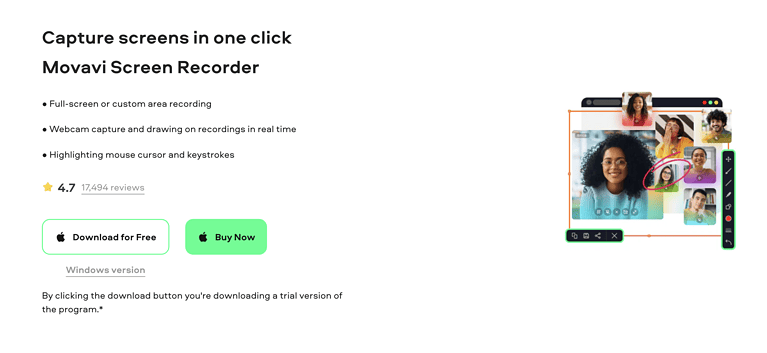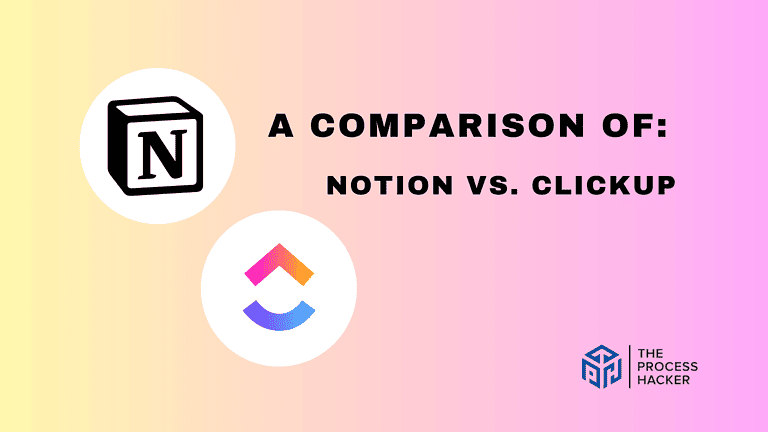How to Streamline the IT Hiring Process: A Comprehensive Guide
Finding the right IT talent for your small business can feel like searching for a needle in a haystack. Where do you look? How do you sort through all the resumes and candidates?
And once you’ve selected someone, how do you onboard them efficiently so they can start contributing value right away? If any of this sounds all too familiar, you’re not alone. Hiring IT staff can definitely seem like its own full-time job at times. But there is good news!
In this comprehensive guide, I’ll share my streamlined approach to the entire IT hiring process—from drafting a targeted job post to conducting efficient interviews to smooth onboarding. We’ll look at tools and strategies to help you hire high-quality tech talent faster without losing your mind.
By the end, you’ll feel much more confident in your ability to quickly hire the perfect IT person so you can get back to growing your business. Let’s get started!
What is the IT Hiring Process?
The IT hiring process involves several stages designed to identify and bring on board the most suitable candidates for technology-related positions within your company. The hiring process begins with defining the role’s requirements and ends with making a successful hire. Along the way, you’ll engage in sourcing candidates, screening applications, conducting interviews, and ultimately selecting the right person for the job.
Following these structured hiring process steps ensures that your hiring practices are effective and aligned with your strategic business goals. This methodical approach reduces the time to hire and improves the quality of your tech team, directly impacting your company’s ability to innovate and compete in the digital age.
Why Should You Hava An Efficient Hiring Strategy in Tech?
The hiring process in IT goes beyond filling vacancies; it encompasses the critical task of identifying candidates who align with your company’s specific requirements and culture. An efficient and streamlined hiring process not only reduces the time taken to acquire talent but also optimizes resources, ensuring that the focus remains on quality rather than speed.
When the hiring process is well-structured, it enhances productivity and minimizes the risk of hiring mismatches, which can lead to costly turnover and impact team morale. Moreover, a clear, transparent process allows candidates to better understand your organization’s expectations and culture, leading to a more positive candidate experience.
In a competitive job market, a well-executed hiring process is essential for attracting and securing top talent. It enables your organization to complete projects on time and maintain its innovative edge in the fast-evolving technological landscape.
Who are the Key Players in the IT Hiring Process?
There are several key players involved in the IT hiring process, each with their own responsibilities and role in finding the right candidate for the job. These players include the following:
Hiring Managers
The hiring manager is pivotal in the IT hiring process. You’ll rely on them to define the role’s requirements and to lead the search for candidates who not only have the right skills but also fit well within the team. They’re your primary strategist, making crucial decisions on the necessary skills and how they align with your company’s current and future projects.
Hiring Team
The hiring team typically includes technical leads or senior IT staff who can validate the technical skills of candidates. This team works closely with the hiring manager to assess the technical prowess of applicants and their potential to grow within the company. Each of their valuable insight can’t be undermined, as they ensure that the technical standards of your department are upheld.
HR Representatives
An HR representative plays a crucial role in the logistics of the hiring process. They manage the flow of candidates, from initial contact through scheduling interviews and handling the paperwork associated with new hires. Their involvement is essential for maintaining a smooth, organized hiring process that respects both the time of your team and the candidates.
By understanding these roles and how they interact, you can ensure that your IT hiring process is not only effective but also a positive experience for everyone involved. This strategic approach will help you secure top talent, keeping your IT operations cutting-edge and competitive.
How to Optimize Your IT Hiring Process
Preparation and planning are foundational to a streamlined hiring process. Knowing what you need and when you need it helps you avoid rushed decisions and ensures you’re always ahead in the recruitment game. It’s about aligning your hiring strategy with your company’s growth and technological needs.
#1) Building a Strong Employer Brand
In today’s competitive job market, having a strong employer brand can make all the difference in attracting top talent. Your employer brand represents your company’s values, culture, and mission, and it’s how potential candidates perceive your organization before even applying.
By showcasing your company culture, sharing success stories, and using employee testimonials on your website and social media channels, you can create a positive perception among job seekers. A strong employer brand attracts top talent and increases employee retention rates, allowing your workforce to feel connected and proud of the organization they work for.
So, focus on building a strong employer brand to attract qualified candidates and create a thriving workforce.
#2) Craft an Effective Job Description
Your job description is your first opportunity to make a strong impression and attract top IT talent. Be clear and detailed, outlining specific skills, experience, and technologies. Highlight the team structure and unique benefits your company offers. A captivating job posting includes technical requirements and desired soft skills.
Showcase company culture and values, giving potential candidates a glimpse into what it’s like to work for you. Emphasize growth opportunities to attract ambitious IT professionals seeking a place to learn and develop their careers.
A well-crafted job description attracts qualified applicants and helps filter out those who aren’t the right fit, saving time and effort in the long run.
#3) Screen and Shortlist Candidates
A robust screening process is your first line of defense against a deluge of unqualified candidates. Think of it as your gatekeeper, ensuring only the most promising applicants make it through.
Start by reviewing resumes to quickly identify those with the necessary experience and qualifications. Further, applicant tracking systems can be a lifesaver, automating the process and flagging top candidates. Conduct a phone screen to assess communication skills and cultural fit and gauge their genuine interest in the role.
By implementing these strategies, you’ll create a streamlined screening process that saves time and allows you to focus on the best potential hires.
#4) The Interview Process for IT Positions
Interviews are your secret weapon for ensuring consistency and fairness throughout the hiring process. By developing a set of standard questions focusing on technical skills and cultural fit, you’ll gain valuable insights into each candidate.
Incorporate practical tests or problem scenarios relevant to the role to assess the candidate’s ability to apply their knowledge in real-world situations. By adding coding challenges or technical tests, you’ll gain a deeper understanding of their problem-solving abilities and coding expertise.
Remember to also assess their soft skills, such as communication, teamwork, and adaptability, which are essential for success in any IT role. Further, you should gauge cultural fit by ensuring alignment with your company’s values, demonstrating a strong work ethic, and meshing well with your existing team.
#5) Make the Hiring Decision
When you’re ready to make a hiring decision, it’s crucial to look beyond just technical qualifications. Consider each candidate holistically by assessing soft skills, problem-solving abilities, and how they’ve approached challenges in their past roles.
To make well-rounded hiring decisions, involve your hiring team in the evaluation process. This includes not just the immediate team the new hire will join but also key stakeholders from other departments who will interact with them. This collaborative approach ensures diverse perspectives are considered, leading to a more informed decision.
Before finalizing the hiring decision, conduct thorough background and reference checks to verify the candidate’s past job performance and behavior. This will also help confirm that they have the skills and experience they claim to possess, ensuring you bring on board a reliable and competent new team member.
#6) Extend the Offer with Competitive Benefits
In this final stage, extend the offer to the chosen candidate with a competitive salary and benefits package. Clearly communicate all aspects of the offer, including start date and job responsibilities. This will help set clear expectations for both parties and avoid any misunderstandings.
Ensure that the benefits package of the job offer letter is competitive within the tech industry. This includes not only salary but also flexible work arrangements, health benefits, and opportunities for professional development.
Once the offer is accepted, celebrate this milestone by welcoming the new hire to your team and introducing them to their colleagues!
Best Practices for IT Recruitment
To stay ahead in the competitive tech landscape, recruiting top IT talent requires a blend of traditional and innovative strategies.
By focusing on creating an attractive work environment, utilizing efficient recruitment technologies, and maintaining a fast yet thorough hiring process, you can attract skilled professionals who are not just looking for a job but a place where they can grow and make a significant impact.
Implementing these best practices ensures that your recruitment efforts yield the best results, enhancing both the performance and innovation of your tech teams.
Common Pitfalls in IT Recruitment
Even seasoned HR professionals can fall into these common IT recruitment traps. Recognizing them is the first step toward building a more robust hiring strategy.
- Lack of a clear job description: Think of this as your roadmap. If you’re unsure where you’re going, how will anyone else? A vague job description leads to confusion and unqualified applicants.
- Inadequate screening processes: It’s tempting to rush, but taking the time to thoroughly screen candidates saves headaches down the line. Think of it as quality control; you wouldn’t ship a product without testing it first, right?
- Overlooking cultural fit: Skills are essential, but so is fitting in with your team. A brilliant coder who clashes with everyone else can disrupt productivity and morale.
- Rushing the hiring process: Desperation can lead to bad decisions. Take your time, and don’t settle for a less-than-ideal candidate just to fill a seat.
Understanding these pitfalls allows you to create a more targeted and efficient hiring process. In the next section, we’ll explore strategies for attracting top IT talent and optimizing each stage of the recruitment journey.
Get Recruitment Services
Sometimes, outsourcing parts of your recruitment process can be beneficial. Consider partnering with specialized recruitment agencies that understand the intricacies of technology recruitment and beyond. They can provide a pool of pre-screened candidates and offer valuable insights into the job market.
Leverage Technology in Recruitment
Technology can significantly enhance your recruitment process. Organize applications, automate initial screenings, and manage communications using applicant tracking systems (ATS). These tools help save time and reduce human error.
- Applicant Tracking Systems (ATS): Use an ATS to organize and streamline the recruitment process. This tool can help manage candidate profiles, resumes, and status updates, which enhances communication and efficiency.
- Video Interviewing Tools: Implement video interviewing tools to conduct initial screenings, especially for candidates who are not in the local area. This saves time and resources for both the candidates and your team.
- Data-Driven Recruitment: Use analytics tools to track the effectiveness of your hiring process and make informed improvements. This includes analyzing sources of hire, time to hire, and candidate satisfaction.
Speed Up the Hiring & Onboarding Process
In today’s competitive IT market, time is of the essence. A lengthy hiring and onboarding process can lead to losing your dream candidate to a faster-moving competitor.
Speed things up by doing the following:
- Streamline Your Screening Process: Utilize software to help filter applications based on key skills and experiences. This can reduce the initial time spent reviewing unsuitable candidates.
- Conduct Efficient Interviews: Prepare structured interviews that are concise yet comprehensive enough to assess a candidate’s capabilities and fit. This minimizes the number of interviews needed, which speeds up the hiring process.
- Decisive Decision-Making: Train your hiring team to make quick yet effective decisions. This will reduce the risk of losing the best candidates to other offers and speed up the overall process.
Once you’ve extended an offer and the candidate accepts, ensure a smooth transition for your new employee. A well-structured onboarding process prepares them for success in their first 90 days. Provide all necessary information, tools, and resources, and assign a mentor to guide them through the initial learning curve.
Foster integration with the existing team by encouraging collaboration and creating opportunities for them to connect with their colleagues. A positive onboarding experience boosts morale, increases productivity, and reinforces your company’s commitment to its employees.
Measure and Improve Your IT Hiring Process
Regularly reviewing and refining your hiring process is vital to maintaining an effective recruitment strategy. Seek constructive feedback from both candidates and hiring managers after each hiring cycle.
Establish metrics to evaluate the efficiency of your process—such as time-to-fill, candidate satisfaction, and retention rates—to further guide your hiring methods. An iterative approach ensures you remain dynamic in your hiring practices, allowing you to adapt to changing market conditions and evolving team needs.
Additionally, it fosters an environment where all stakeholders feel empowered to provide their perspectives. It encourages an open dialogue about recruitment challenges and successes.
Final Thoughts on the IT Hiring Process
In conclusion, a well-crafted and optimized IT hiring process is crucial for your company’s success in the ever-evolving tech landscape.
By following the tips and strategies shared in this guide, you can attract and retain top talent, reduce hiring time, and build a strong, skilled team that will elevate your business to new heights. With an adaptable mindset and a willingness to continuously improve, your hiring process can become a competitive advantage in the fierce battle for tech talent.
Remember to avoid common pitfalls, embrace technology, and prioritize technical test expertise and cultural fit when evaluating candidates. If you need extra support or guidance, don’t hesitate to seek out professional recruitment services that specialize in IT—they can be invaluable allies in finding the perfect fit for your team.
So, let’s make our IT hiring processes efficient and effective to propel our businesses toward success!







